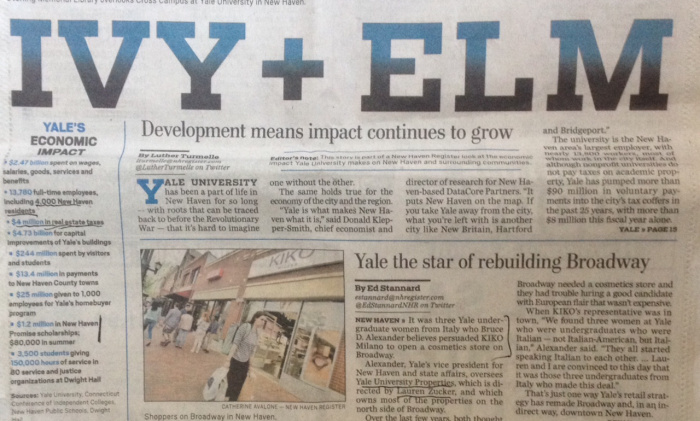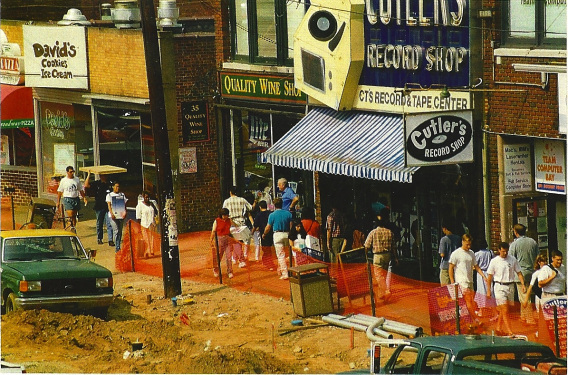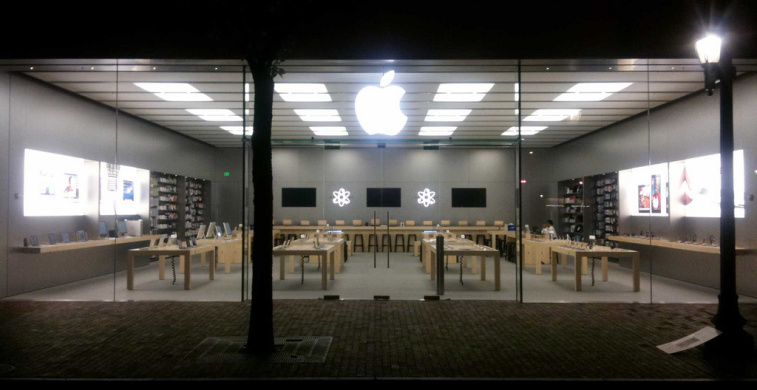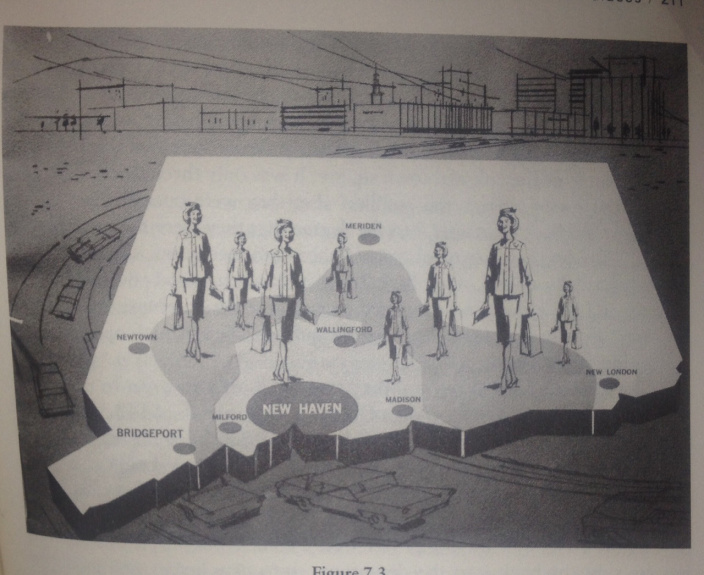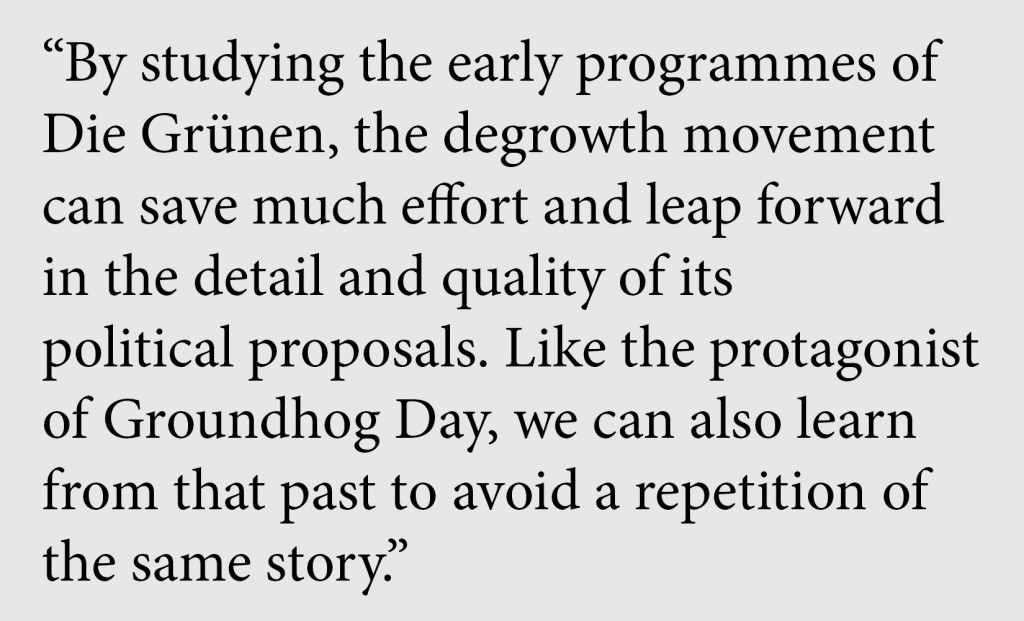
by Aaron Vansintjan
I’ve been seeing a lot of news about food waste recently. In February, a report revealed that governments could save up to US$300 billion per year by cutting food waste. In March, it was announced that Loblaw’s, one of Canada’s major food retailers and supermarket chains, will start selling ‘ugly fruit’ at a discount. Then came the stories about start-ups in the US who are trying to source discarded vegetables from farmers, re-using them for other products.
And last week, many people excitedly posted the news from France: the government will force supermarket chains to send their food waste to charities. This announcement led several to suggest that the UK, and even the whole world, which tops EU in food waste, should follow France’s example. And now, I’m reading stories about a new ‘social movement’ in Germany, where people volunteer to pick up and redistribute food from grocery stores, food retailers, bakeries, and restaurants.
I recently completed a three-year research project where I studied the food waste system in Canada. Specifically, I interviewed food bank directors and researchers, trying to piece together the history of how food banks evolved. Knowing this, friends and family enthusiastically send me articles describing these new ‘solutions’ to food waste, thinking I’d also be excited. However, having studied the food waste system, I find it difficult to respond without being too much of a downer: it won’t work.
Don’t get me wrong, I think these are all promising developments. Sending surplus food to charities will mean that supermarkets will bear part of the costs of the food waste they produce, and that the poor get access to more food. Selling ugly vegetables will mean landfills don’t get filled with perfectly good produce. In short, they mean that we are in part succeeding at making our food system smarter. However, I don’t think this is really a cause to celebrate.
“If you care about changing the food system, then selling ugly fruit or forcing supermarkets to send the food to charities is not the answer.”
A story might help explain why I don’t think such efforts will address the food waste problem. Any discussion around food brings up a lot of feelings, so I’ll use a proxy. Say you own a major retail company, selling toys. You sell toys at really cheap prices, allowing as many kids as possible all over the world to get them. But some kids, because their parents don’t have any money, don’t get the toys. Meanwhile, because you try to produce as many toys as possible, for as many different kids (and parents) as possible, you will make a lot of toys that no one wants to buy. Also, accidents happen, and often. A pallett of dolls falls to the ground, breaking the boxes. A whole line of toys gets mislabeled. Because toys are quite cheap to make, it’s actually less expensive to dump these toys in the landfill than to pay someone to unbox them, sort them, re-label them, and so on.
But say a bunch of concerned citizens realize all these toys are being thrown out. This is ridiculous–kids all over the world are crying because they don’t get toys (and for many other reasons too, but let’s put that aside). So they approach one of your store managers and ask, can we take your broken toys and give them away for charity?
At first, your store manager isn’t into it. It will be annoying to let these people into the warehouse and rummage around. But they say they’ll make it easy for her: volunteers will drive in, pick up all the toys really fast, and drive out. She also concedes that, actually, it is a real shame that all these toys are being thrown out. So she agrees.
Pretty soon store managers at different locations are telling you the same thing. People are picking up toys and giving them away… all for free! You didn’t have to lift a finger. What’s more, they’re minimizing the costs of sending more things to the landfill–which often is calculated by weight. So you call in a bunch of these benevolent citizens and you tell them, “Listen, what you’re doing is great. We want to help you. We’ll give you funding, and all the broken toys you want. We’ll make it easier for you, so you don’t even have to ask a store manager anymore. We’ll also organize country-wide advertising so that consumers can give away their toys and know about all the good work you–and my company–are doing.”
This is an offer they can’t refuse–the toy-charities were quite expensive to maintain, since the amount of refused toys just seemed to keep increasing. Volunteers, many of whom take the toys home themselves, are tired, and any less work is appreciated. They are glad to get the extra support.
In order to cut costs even further, you put some of the broken and ugly toys in your store–advertising them as a new, smarter way to cut waste. You might also send some of your new designs to the charities as test products, to see if any of them catch on–a cheap way to do consumer product testing.
Eventually, your efforts are rewarded. The ugly toys campaign turns out to be an excellent public relations strategy, at very small costs to you. Soon enough, the government mandates that all toys should make their way to charities, which you helped create in the first place. While this will incur some costs–you’d have to make it easier for charities to pick up the toys, which will mean hiring more staff–you still benefit from the publicity you receive from the charity efforts, and you won’t really need to change your production line. So in the long run, not a big deal.
But what’s the problem here?
- Even if you sponsor these charities, the financial support they receive doesn’t nearly compare to the amount of labor involved. Essentially, you’re shifting toy-waste-processing costs onto volunteers, who are doing the work that your company really ought to do. In the field of ecological economics, this is called cost-shifting, and it is one of the primary tools corporations use to increase their profit margin at the expense of society.
- Many of these volunteers are there because they themselves can’t get access to toys. Or they need to fulfill community service hours because of a sentence. Or they don’t have anything else to do–they live lives of isolation. While you’re making the profits, these (mostly marginalized) people are paying the price of sorting your toys.
- It’s not the waste that’s the root of the problem. It’s the production line. You’re producing cheap toys that break easily (endangering children), paying your workers minimum wage, and you constantly produce new toy designs that may not be bought but fill up the shelves nonetheless–guaranteeing a satisfied customer who’ll keep coming back for more.
- While the government may mandate that you send your toys to charities, they do nothing to support the charities–already over-worked and under-budget–that have to process the toys. At the same time, the government gets to cut costs on its welfare programs, since it is argued that the poor now have access to the food they need from charities.
- Even if you were to send the toys to charities, and if you were to pay the charities to process these toys, would it make things better? We’d just be making an extremely wasteful system more cost-effective, essentially subsidizing the production of crappy and wasteful toys.
“Forcing supermarkets to donate their food waste is really just part of the neoliberalization of the food system — where both the food industry and the government cut costs, while society has to pick up the slack.”
Extend this situation to the food retail industry, and it gets much worse. Because of the highly efficient production line, the agricultural process is incredibly environmentally hazardous, relying both on high inputs of fossil fuels and the use of toxic pesticides. The food industry relies on unjust migrant labor to drive production costs lower. This industry makes most of its new products from all the same ingredients, just packaged and shaped differently. For this reason, most food donated to food banks is highly processed, and quite unhealthy. Unlike with toys, volunteers often rely on the food they hand out. Food rots, so it is incredibly difficult to store and sort. With little funding and no municipal support, food banks rely more and more on volunteer service, while being increasingly bound to the continued existence of the industrial food system.
Because of these combined problems, forcing supermarkets to donate their food waste is really just part of the neoliberalization of the food system–where both the food industry and the government cut costs, while society has to pick up the slack, leading to the privatization of social safety nets through the establishment of food charities.
If you care about changing the food system, then a ‘smart’ approach to food waste, such as selling ugly fruit or forcing supermarkets to send the food to charities, is not the answer. In addition to forcing supermarkets to send food to charities, there are several things that would be much smarter.
- Fine the corporations for the amount of food waste they produce. This will disincentivize a system that relies on charities to bear the costs of food waste processing. It will also ensure that the industry no longer makes most of its profit from endless lines of new products, which is one of the key drivers of food waste.
- Clarify governmental rules and regulations around food waste, in favor of community groups. This might involve legalizing dumpster-diving, encouraging networks of citizens who wish to harvest food waste, and allowing the safe and hygienic processing and sale of food waste by non-profit community organizations.
- This may sound crazy, but not only have food banks developed incredibly complex and efficient systems of dealing with food waste, they also aren’t just charities. They often are crucial spaces for poor, isolated people to meet others and break their loneliness, while learning how to cook food. But even though food banks have the will to run more community-oriented activities, they often don’t have enough funding, staff, or time. So create a fund that encourages food banks to start collective kitchens, cooking workshops for single mothers and migrants, urban gardens, compost programs, and community food events. This will generate local food systems and more inclusive, safe neighborhoods. It will give those who otherwise couldn’t buy at the supermarket support structures so that they too can access acceptable food. It will help shift food banks from disempowering, demeaning, top-down, bureaucratic organizations to ones that are engaged in their community, empowering, and fun. Furthermore, it may help deal with the other 95% of food waste not created by supermarkets.
- A bit more challenging: align the goals and activities of governmental departments. Why does one arm of the government fund employment in the community food sector for marginalized residents, when another agrees to free trade deals, leading to a food industry that relies on cheap migrant labor? Why does one department fund research on carcinogenic food, or ban toxic chemicals, when another turns a blind eye to destructive farming practices? In most countries, health, sanitation, agriculture, trade, and municipal policies are often misaligned and should be joined up, otherwise food waste–and injustices–will just keep piling up.
These policies–most of them quite simple to implement–would ensure a safer, efficient, more just, and smarter food system. They wouldn’t only force supermarkets to limit their food waste. They would allow for a transformation from a food system oriented towards the bottom line to one that responds to people’s needs.
Aaron Vansintjan studies ecological economics, food systems, and urban change. He is co-editor at Uneven Earth and enjoys journalism, wild fermentations, decolonization, degrowth, and long bicycle rides.
